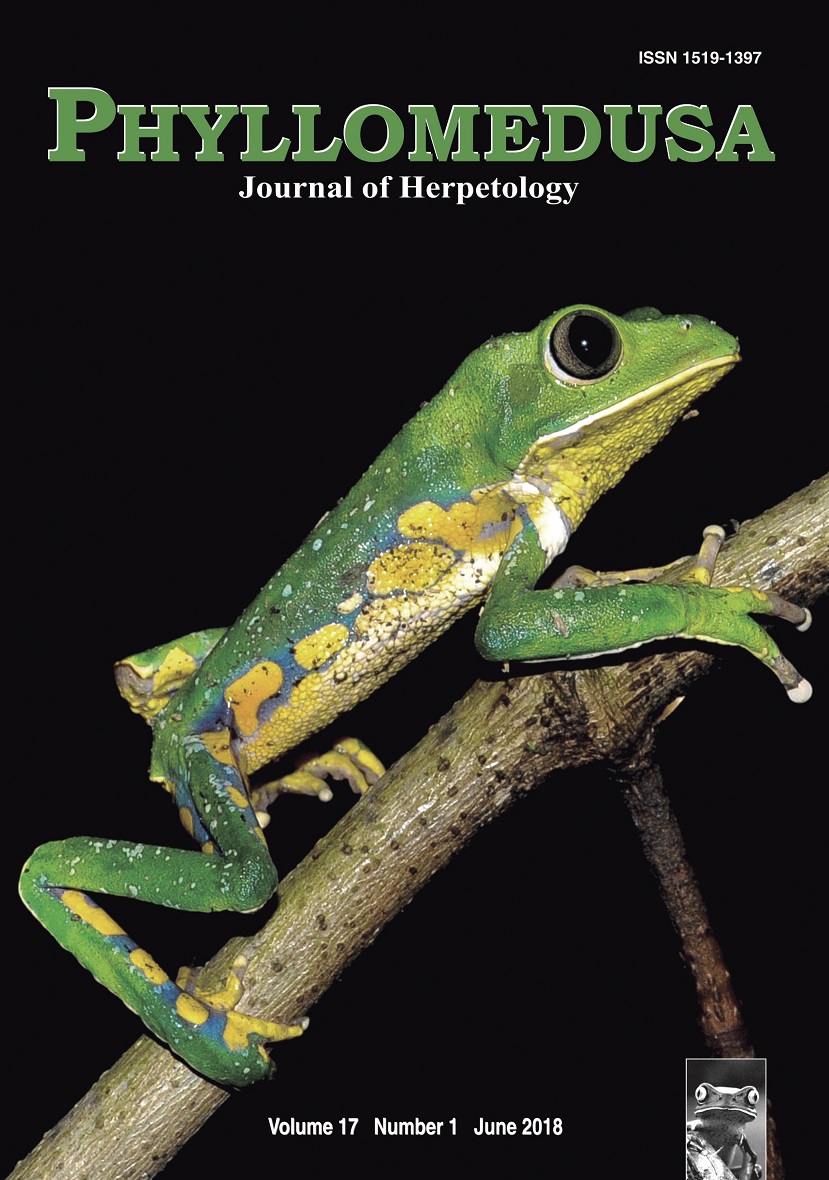Age estimation through skeletochronology and mark-recapture of free-living Liolaemus leopardinus (Squamata: Liolaemidae) from Chile
DOI:
https://doi.org/10.11606/issn.2316-9079.v17i1p101-112Keywords:
bone, body-length, high-altitude, lifespan, lines of arrested growth, lizards.Abstract
Age estimation through skeletochronology and mark-recapture of free-living Liolaemus leopardinus (Squamata: Liolaemidae) from Chile. Age determination is a crucial component of ecological studies. Researchers have relied on different methods and techniques, for example mark-recapture, body size, and skeletochronology, to assess the age of free-ranging individuals. We used all three methods to estimate the age structure of a population of Liolaemus leopardinus, a highly social and saxicolous lizard species endemic to the temperate region of central Chile. This high-elevation and secretive species is considered threatened and, although efforts have been made to reveal more specifc details about the species’ natural history, crucial details of its biology are still unknown. Our goal was to associate the number of Lines of Arrested Growth (LAGs) to snout–vent length (SVL) and use LAGs as an age estimation proxy on free-ranging individuals. For the skeletochronology analyses, a combination of toe-clips was collected when each subject was frst captured in 2012–2013. SVL for all captured individuals was recorded during two different feld seasons (austral spring to fall of 2011–2012 and 2012–2013). SVL data were also available for 10 individuals initially collected and permanently marked in 2005 (one juvenile and nine adults) and recaptured in 2011–2012. Three of those 10 subjects were captured again in 2012–2013. Our results revealed the formation of LAGs in L. leopardinus and a high degree of bone remodeling in both juveniles and adults. This bone remodeling combined with the high rapprochement in peripheral LAGs on the samples of the oldest lizards suggest that phalangeal bones are not suitable for age determination in this species. On the other hand, our mark-recapture results allowed us to assign individuals to four different age-classes when a subject’s SVL was associated with activity periods and recaptures. Individuals of L. leopardinus are long-lived and their lifespan can exceed a decade. Female lizards become sexually mature at three to four years of age.Downloads
Download data is not yet available.
Downloads
Published
2018-06-26
Issue
Section
Articles
License
All material originally published in Phyllomedusa belongs to Escola Superior de Agricultura Luiz de Queiroz - Universidade de São Paulo. All contents are under a license of Creative Commons BY-NC-ND.How to Cite
Santoyo-Brito, E., Fox, S. F., & Núñez, H. (2018). Age estimation through skeletochronology and mark-recapture of free-living Liolaemus leopardinus (Squamata: Liolaemidae) from Chile. Phyllomedusa: Journal of Herpetology, 17(1), 101-112. https://doi.org/10.11606/issn.2316-9079.v17i1p101-112



 Impact Factor (JCR): 0.600
Impact Factor (JCR): 0.600 CiteScore: 1.0
CiteScore: 1.0